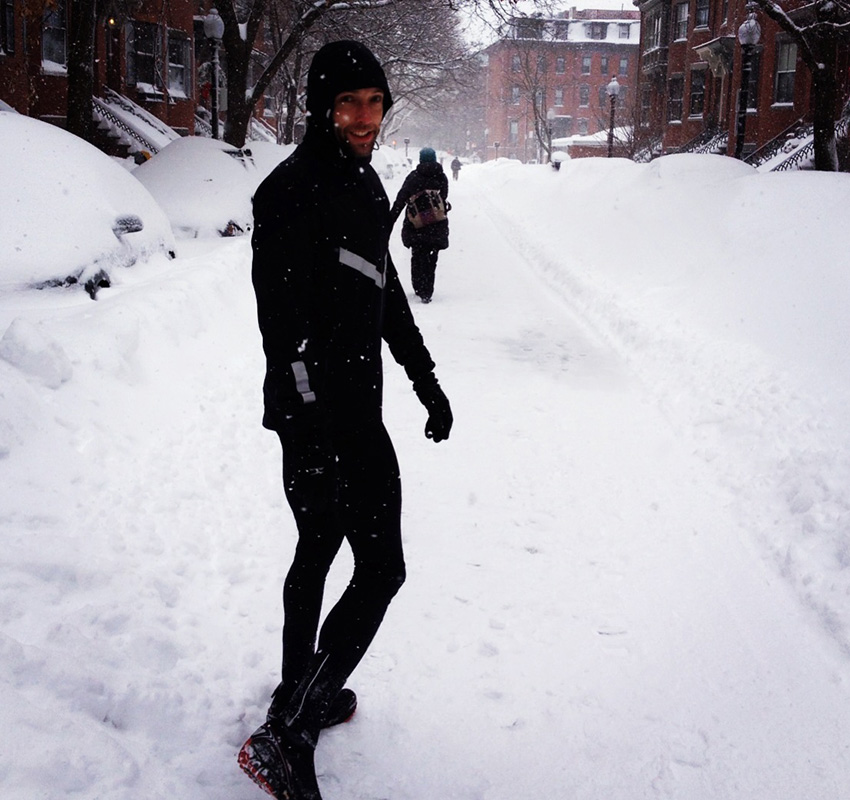How to Train for a Marathon

How do you train for a marathon? Try running in a Boston blizzard. Photo of Dan Fitzgerald provided.
Dan Fitzgerald knows a thing or two about running. He is the co-owner and founder of Heartbreak Hill Running Company and South End Athletic Company, head coach of the Red Cross marathon team, and a former Division I track athlete and captain of the Boston College track team. We asked him how marathoners train, from elite runners to everyday joggers. Want to run a marathon? Here’s how:
How do marathoners train?
They run! Usually four to seven days a week. A typical week would include at least one “speed day” (track or hill interval training) and a long run day. The long run increases in cycles.
How far in advance do most people start training?
The more time the better! It’s all about getting comfortable over distance, so if you’re missing this year’s Boston, start running now to get your body ready for a hard training block that will start in December. To go from zero running to the marathon in 20 weeks is tough but if someone is a regular runner (maybe four miles three or four times a week), a 16- to 20-week program will get them through the finish line.
What is the difference training a regular runner and an elite runner?
An elite runner usually runs six to seven days a week (sometimes twice a day a few days) with a moderate speed day, a more difficult speed day, and a long run day with maintenance running days in between those days. The differences between a “regular” runner’s training and an elite runner’s training would be the intensity of the workouts and training, and the volume would likely be different.
Can you give me an example of a training regime for a “regular” runner?
They may run two to five miles during the week, maybe a casual speed day (often not), and increasing long runs until three weeks before the marathon (capping at 20 to 22 miles). Weekly mileage [would be] as low as 30 miles up to about 75 miles per week.
What about an elite runner’s regime?
An elite runner’s training would be more like: 10-plus miles every day (maybe one day off), a weekly run of 16 to 22 miles, a hard workout (on the track or varied, hard pacing over 10 miles of roads or trails), a moderate (but hard for a normal person) second workout, regular massage/body work weekly, frequent naps… Lots more running, also more rest to facilitate more running. Weekly mileage of 75 to 120 miles per week.
Sounds tough. What are some roadblocks that get in the way of training?
Time is always tough. It can be almost an hour every day and two hours on a weekend day to train for the marathon. Injuries are the other major issue. Asking your body to push past what would be your normal limits does not come without strain.
How do you overcome them?
You need to be very dedicated and committed to making the time to run. A good coach can help work around your life. A good physical therapist or Active Release Therapy (ART) practitioner can help keep your running and manage your injuries.
What kind of gear/clothes do you recommend for marathon runners?
A good pair of running shoes is primary. All fabrics should be wicking. There are so many high tech, lightweight comfortable fabrics that training through winter can be manageable. Wicking socks are also key. Body Glide is also important. People usually figure that out the hard way. 20 miles of things rubbing can make some parts uncomfortable…

Training group. Photo provided.


